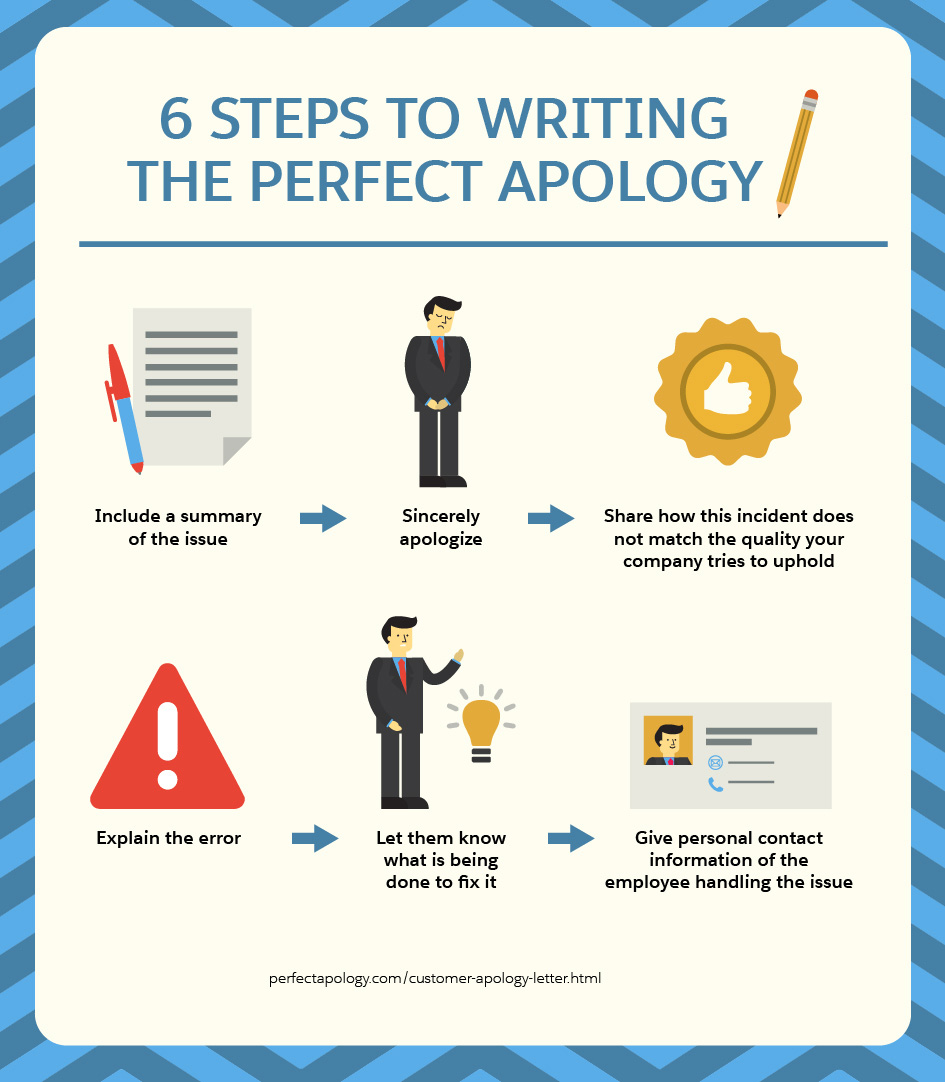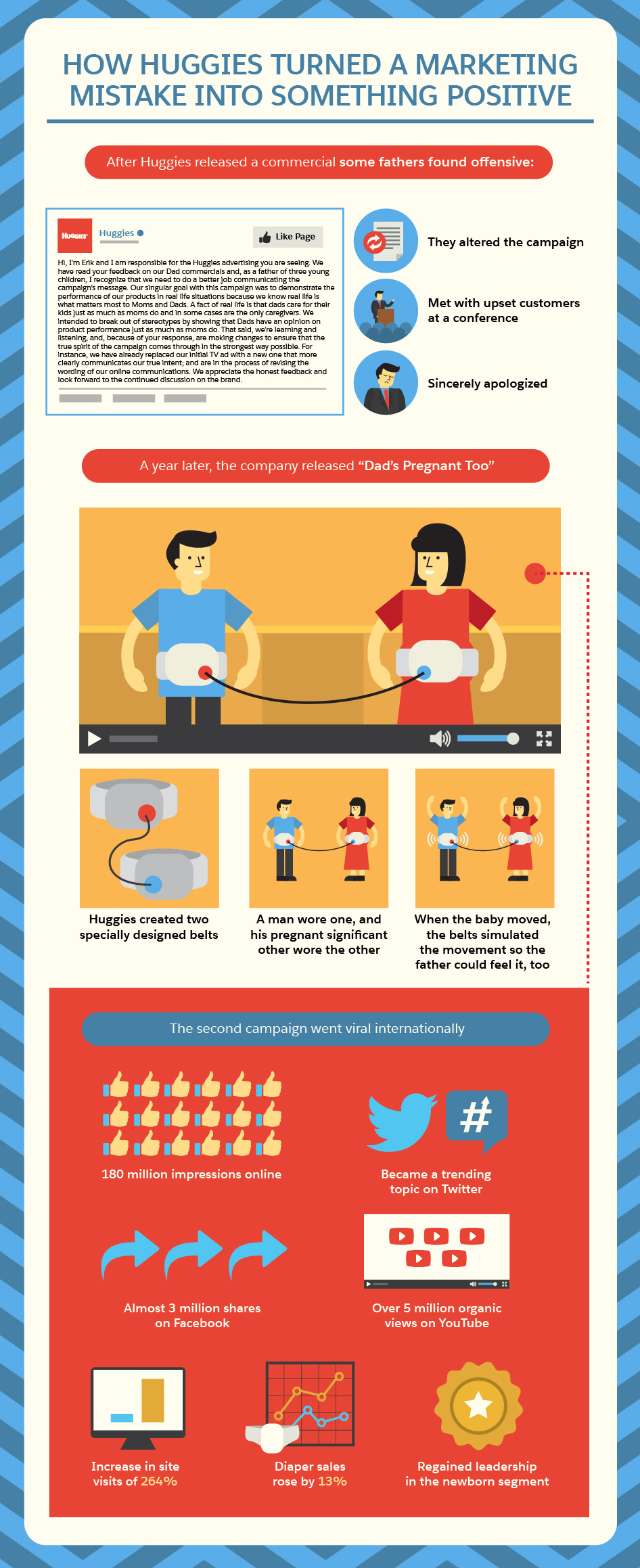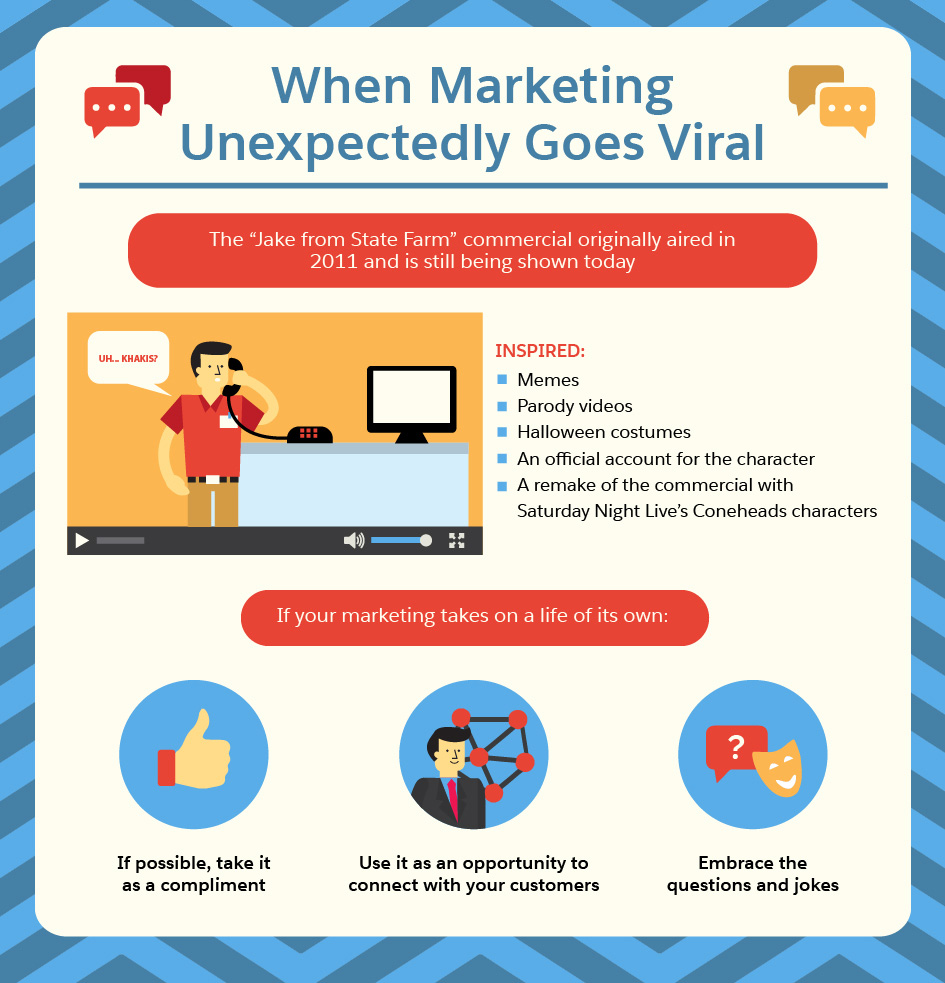
No matter how hard we try, we will never be perfect. This is true for businesses, too, especially in their marketing efforts. No matter how hard they try to create the right message for an audience, mistakes happen. However, those mess-ups don’t have to be fatal. It is possible to turn a marketing faux pas, such as typos, product issues, and poor messaging, into genuine opportunities to connect with your target audience.
Your ideal customers are looking for companies that are genuine and quick to fix mistakes. Consumers are savvy: Trying to cover up a mistake and hoping it goes away can make it much worse. Instead, use the opportunity to gain customer trust. This can resolve the situation with a happier ending: a sale or loyal advocate for your brand.
Below are some of the most common marketing faux pas and how companies can not only work through them, but gain respect along the way.
Order or Customer Information Errors
Two of the most common mistakes in marketing are errors and typos.. Examples include addressing a customer by the wrong name in an email blast, or customers seeing the placeholder of [FIRSTNAME] due to an autofill glitch. Even though customers know you send emails out to many people, they may take it personally when there are errors in communication.

If a customer emails you with an error concerning their account, whether it’s their name or other personal information, it’s important to communicate how badly the company feels for this error. A touch of human humility goes a long way to remedy this mistake.
According to PerfectApology.com, the right customer apology letter for a mistake needs to include:
- A summary of the issue
- A sincere apology and statement of quality that the company tries to uphold
- An explanation of the error
- What is being done to fix it
- Personal contact information of the employee handling the issue in case the customer has more questions they want answered directly
While the length of your apology will depend on the error, it’s important that it gets the point across succinctly. Make sure to send it as soon as possible. Customers will appreciate your speedy reply and apology.
In order to remedy the problem, do what it takes to make it right. This might be letting the customer keep the wrong product, or giving them an exclusive coupon code or gift card for causing an inconvenience.
Going above just apologizing is what makes the interaction memorable for the customer. Any company can say, “I’m sorry.” It takes a great company to say, “I’m sorry, and here’s what I’m doing to fix it.”
Insensitive Messaging
In the fire hydrant of content and offers on the Internet, there are more chances than ever to accidentally send out a marketing message or image that may be taken in a way that wasn’t intended. A simple social media post can go wrong if there aren’t enough checks and balances in place to catch sensitive issues, or if you don’t have someone to consult to make sure the message can’t be construed as something beyond the desired intent.
One example of a company that experienced this is Huggies, who, despite the issue, rebounded and found success. In 2012 it experienced a backlash after releasing a commercial called “Dad Test,” which portrayed fathers in what was perceived as a negative light. After consumer complaints, Huggies altered the campaign, met with angry fathers at the Dad 2.0 Summit, and issued an apology on its Facebook page.
A year later, Huggies made international news after its “Dad’s Pregnant Too” campaign, which featured men and their pregnant significant others wearing specially designed belts that let them feel when their baby moved. It was estimated that the campaign reached 180 million online readers. It became a trending topic on Twitter, got almost 3 million shares on Facebook, and had over 5 million organic views on YouTube. Huggies saw an increase in site visits of 264 per cent. Diaper sales grew by 13 per cent and the company “regained leadership in the newborn segment.” Huggies’ new point of view? “Nothing compares to the feeling of being a father.”

No matter the faux pas, it’s important to take customer’s concerns into serious consideration. Even if it wasn’t the company’s intention to insult or hurt feelings, what matters most is how the customers feel.
In order to fix insensitive messaging, remove the product or advertisement. Many companies send a donation to a related organization. However, to ensure the donation wasn’t made just to quiet complaints, a sincere, heartfelt apology for the mistake on the company’s blog and/or social media can show customers that the company has learned from their mistake. Outlining steps or processes to ensure that it won’t happen again can also help restore customer faith in a product.
Groan-Worthy or Cheesy Marketing

It can happen to any company: marketing that crosses the line into cheesy. Or a tagline that is meant to be serious isn’t taken that way. While this isn’t a mistake as much as an unfortunate circumstance, it provides the opportunity to take something that was misconstrued, and has grown into something bigger or different than you expected, and make it work in your marketing mix.
For instance, something as nuanced as the way a person says a phrase in your commercial can catch on and turn into an internet wildfire. MailChimp experienced just that with its famous ad that plays before every Serial podcast episode. The ad was meant to poke fun at the way people pronounce MailChimp’s name, but neither theSerial producers nor MailChimp were expecting so many people to embrace it as a part of pop culture.
If someone takes your advertising and turns it into a joke or meme, if possible, it’s best to take it as a compliment, not an insult. The companies that are best at connecting with their customers embrace how their user base feels about their marketing. In MailChimp’s case, not only did the company keep the ad unchanged for the second season of Serial, they also created several memes on Instagram and other social media profiles that embraced users’ questions and jokes about the ad. This is a good example of a way to handle a critique of your company’s marketing or advertising campaigns.
State Farm’s “Jake From State Farm” commercial has also become something more than its marketing department could ever have expected. It has turned into a pop culture phenomenon, with memes and parodies on platforms like FunnyorDie, YouTube, and Vine. While the commercial was obviously intended to be funny, State Farm has embraced the audience making it their own through parodies. It even maintains activeTwitter and Instagram accounts for “Jake From State Farm” that uses the same kind of voice and humor that people have taken from the commercial. While State Farm may have not anticipated becoming the object of jokes and parodies, the fact that they weren’t defensive, and instead embraced how their customers took the message, made all the difference.
Accepting and going with your customers’ feelings about your products, marketing, and advertising is crucial to fixing any faux pas that might happen. Even if the message wasn’t created to offend, or the typo just wasn’t caught, being honest and upfront, and owning the situation can turn even the most critical consumer into a long-term, loyal customer.
To view the original article Click Here

No comments:
Post a Comment